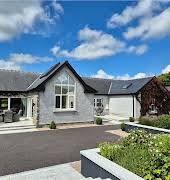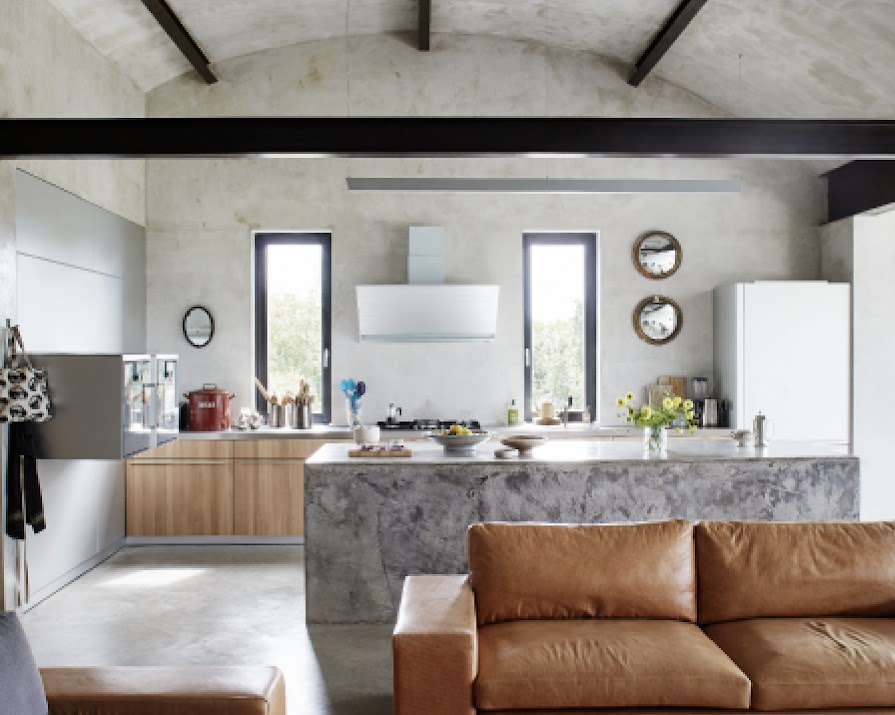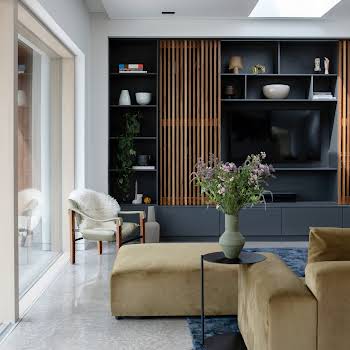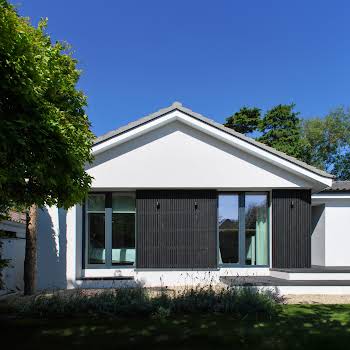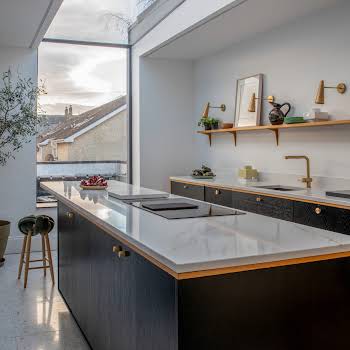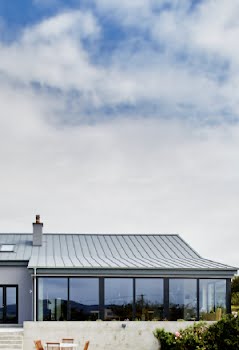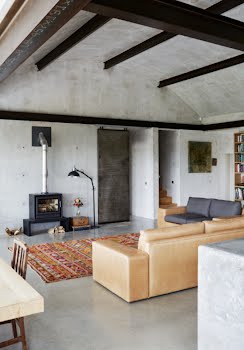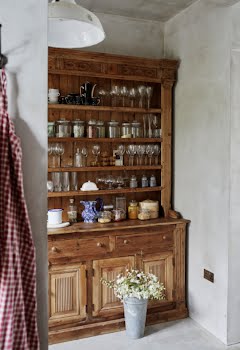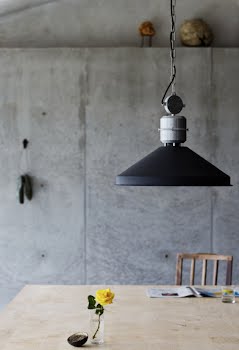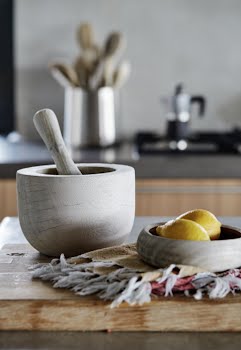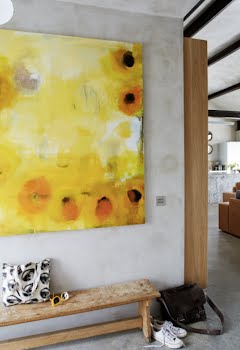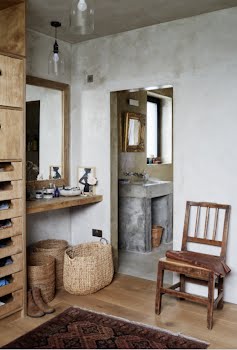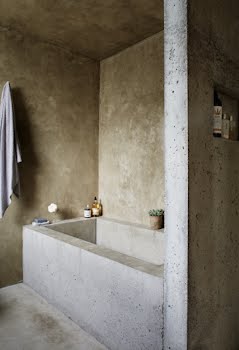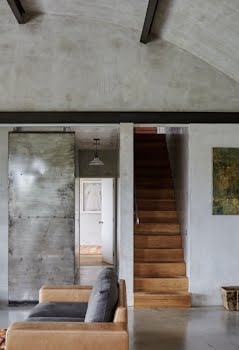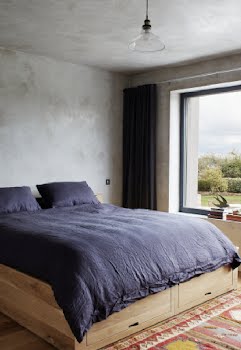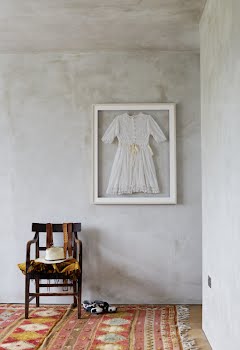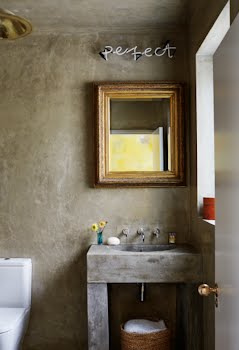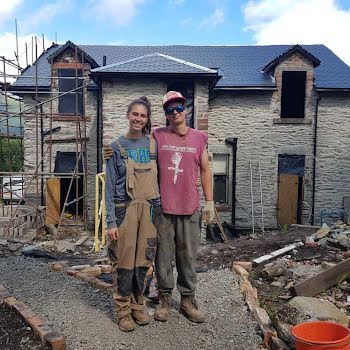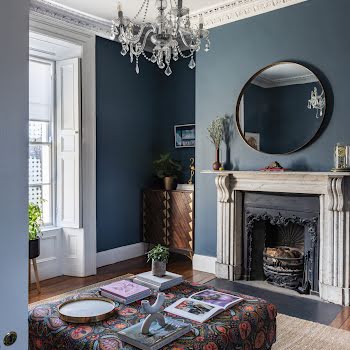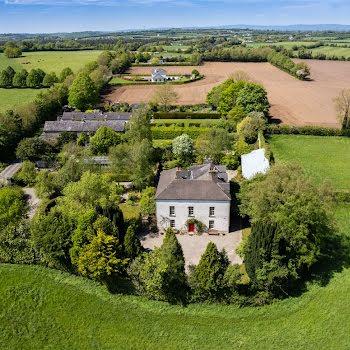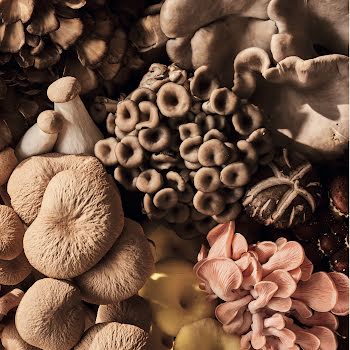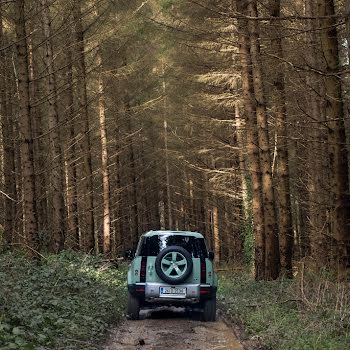
This 1980s Sligo bungalow is unrecognisable thanks to its artist owner’s considered design
By IMAGE Interiors & Living
26th Jun 2022
26th Jun 2022
Remodelling a 1980s bungalow gave artist Cléa van der Grijn a chance to realise her dreams, and create space for her art to breathe, writes Gemma Tipton.
“I should perhaps have knocked it down,” says Cléa van der Grijn, contemplating the light-filled home she designed on an expansive site at Rosses Point in Sligo.
“I thought it would be better to work with a template. I didn’t realise it would have been easier to start from scratch.” Instead, Cléa, one of Ireland’s leading artists, used the footprint of the existing house, ripped out all the internal walls, added a beautiful aluminium roof that reflects the ever-changing Sligo skies, and in the process, created a timeless, but highly contemporary classic for herself and her family. Alongside the house are gardens (“I’ve only been in the house seven weeks, but we’ve already got herbs and vegetables,” she says), an orchard, and Cléa’s all-important studio – a corrugated-clad wooden building, adjacent to the house.

The best artists have an exceptional eye, which is either something innate, or developed through years of looking deeply at things. In Cléa’s case, this is coupled with a great sympathy for materials. Here, solid concrete and unpainted plaster appear soft, almost breathing, and are highlighted with perfectly placed artworks from the artist’s recent exhibitions.
Advertisement
“It was important to me that every single material in the house would never have to be looked after,” Cléa explains. “Everything is either natural wood, metal, concrete or wax plaster. There are no skirting boards, no paint to be redone. Everything will, I hope, only grow more lovely with age. Nothing is pretty or ornamental in the build, everything has a function, but for me it is beautiful.”

The house has been a labour of love, but perhaps it was also in the blood. “I was brought up with my father always buying houses, in Amsterdam or Ireland, doing them up from scratch. He’d sell them for profit and live for a year on the money, making his paintings, which he would then sell,” Cléa remembers. “I would have loved to have been an architect,” she continues. “But the thing about doing something you don’t usually do is that you can say: ‘I think this is gorgeous’. You know, the way you can praise someone else’s baby, but not your own. So since I’m not an architect, I can say I think this house is gorgeous.”
Tactful reticence may preclude Cléa from praising her own art, but that too is gorgeous. Some may know her work from early collaborations with John Rocha, including on Dublin’s Morrison Hotel, but more recently she has been using her extensive travels to investigate other cultures and traditions. The results have been beautiful meditations on the meaning of life, love and death. Skulls and marigolds are a feature, gleaned from trips to Mexico, where the scent of marigolds is said to guide the spirits of the dead home. If this sounds macabre, one look at Cléa’s work will change your mind.

Cléa introduces me to some of the other artworks in the house, which are perfectly placed in their spaces. They are also ideally complemented by the furniture, most of which she designed, and had built with the help of talented makers such as John O’Connell Furniture and Padraigh Fogarty. The same is true of the house: she designed it, and had an engineer submit the plans. Richly coloured rugs warm the floors. “I went over to Morocco and bought the rugs. I went to get the special pigment to colour the walls, but when I got back I realised I wanted natural colours. Big bright colours only work well in hot countries.”
On a ledge is a large Mexican clay pot. “It’s probably one of the most expensive things I bought, but Customs broke it when it was coming over. I got a table, and created a kind of archaeological site. There were about 500 pieces. I numbered them, and stuck it together with gold resin. The old Japanese word kintsukuroi means that if you fix something broken, it becomes more beautiful,” she says. “I always wanted to make a home,” concludes Cléa. “I love doing this more than anything.” And the result? A real work of art.
Photography Brent Darby Production & Styling Pippa Rimmer
Advertisement
This feature originally appeared in the September/October 2018 issue of IMAGE Interiors & Living.









